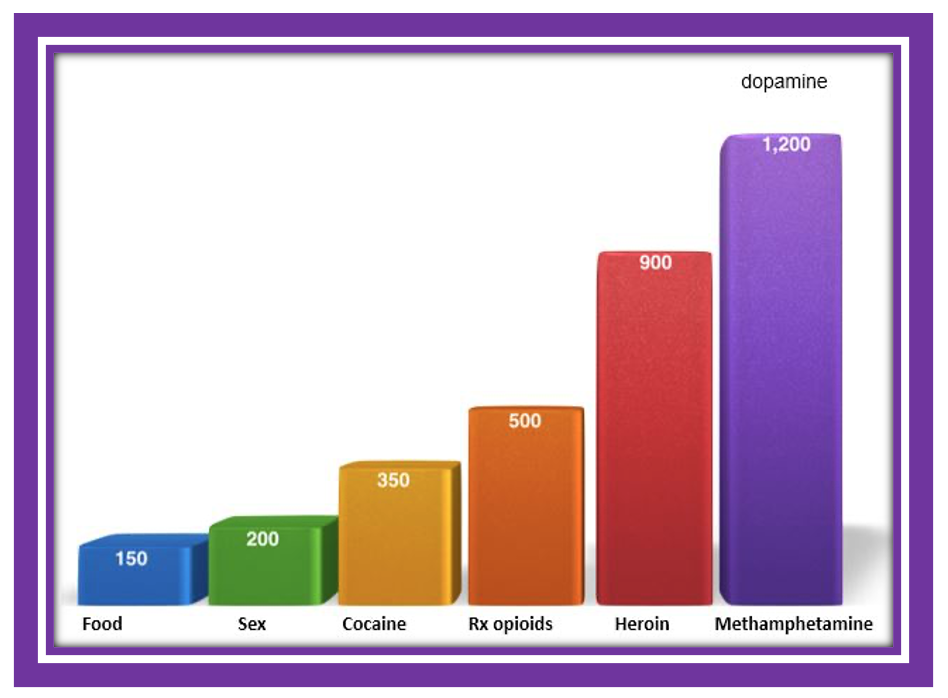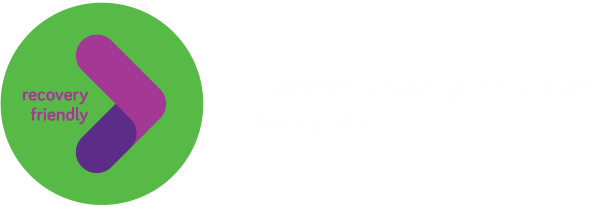
Why is it hard for some people to stop using substances; do they lack the will power? No, it’s because the substance itself has stolen the normal balance of the brain (Shatterproof, 2022b). Substance Use Disorder (SUD) is a brain disease and not a choice.
Our brain has a reward system that responds to dopamine, a neurotransmitter (NIDA, 2020a). Dopamine is how we learn what we like and don’t like in daily life, which includes drinking a big glass of water when we are thirsty, getting a good hug from a loved one, or getting to eat our favorite food. DING, DING, DING, the brain will let out dopamine telling us that those things feel good (Shatterproof, 2022b).
The brain has a normal range of dopamine fluctuation. However, with substances, the fluctuations in dopamine are extreme (Shatterproof, 2022b). They are so extreme that the brain becomes desensitized to the subtle and healthy fluctuations (Shatterproof, 2022b). Many times, people with SUD will become malnourished or have strained relationships with friends and family simply because the reward system in their brain is not feeling the effects of those daily pleasures (NIDA, 2020a). The main pleasure they receive in life is from the substance itself, and their body feels the substance is needed to survive; even though it is making them sick.
Below is a graph showing the extreme effects of dopamine from different substances and gives insight as to why people with SUD sometimes need evidence-based interventions to help them recover.

Retrieved from: https://truthpharm.org/addiction-treatment/science-of-addiction/
References:
ACEs Aware. (2022). The Science of ACEs and Toxic Stress. Retrieved from
The Science of ACEs & Toxic Stress | ACEs Aware – Take action. Save lives.
Centers of Disease Control and Prevention – CDC. (2021, April 6). Preventing Adverse Childhood Experiences. Retrieved from
Preventing Adverse Childhood Experiences |Violence Prevention|Injury Center|CDC
National Institutes on Drug Abuse – NIDA. (2020a, July). Drugs and the Brain. Retrieved from
https://nida.nih.gov/publications/drugs-brains-behavior-science-addiction/drugs-brain
National Institutes on Drug Abuse – NIDA. (2020b, July). Preventing Drug Misuse and Addiction: The Best Strategy. Retrieved from
National Institutes on Drug Abuse – NIDA. (2019, August). Genetics and Epigenetics of Addiction
DrugFacts. Retrieved from Genetics and Epigenetics of Addiction DrugFacts | National Institute on Drug Abuse (NIDA) (nih.gov)
Recovery Research Institute – RRI. (n.d.). The Brain in Recovery: The neuroscience of addiction recovery.
Retrieved from The Brain in Recovery – Recovery Research Institute (recoveryanswers.org)
Sharp, A., Lautieri, A., Thomas, S. (2022, February 25). Drug Withdrawal Symptoms, Timelines and Treatment. American Addiction Centers.
Retrieved from Drug Withdrawal Symptoms, Timelines, and Treatment (americanaddictioncenters.org)
Shatterproof. (2022a). Just Five: Are You at Risk. Retrieved from
Are You at Risk? – Recovery Friendly Missouri (justfive.org)
Shatterproof. (2022b). Just Five: The Science of Addiction. Retrieved from
The Science of Addiction – Recovery Friendly Missouri (justfive.org)

